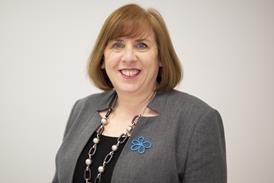How can the NHS use information to drive improvements in care?


One of the biggest changes over the history of the NHS is the increase in information available to commissioners and providers. We now know more about what the NHS does and how that impacts on health than ever before − which offers both opportunities to improve care and a challenge to organisations about how they manage and respond to this.
There is an increasing commitment to using information to drive change from those at the top of NHS England − including national director for patients and information Tim Kelsey and medical director Sir Bruce Keogh. The current debate on mortality information and the use of increasingly sophisticated methods of identifying outliers is highlighting how much information is available.
However, provider boards are not yet fully utilising the information they have, as indicated by failures to react to early warnings and use information to drive improvement. Part of this may be overload and the difficulty in determining what is and isn’t important.
For many trusts this will be a capacity issue: do they have the capability and expertise to sift through multiple data sets and distinguish what needs to be acted on? And is this then reflected in what is drawn to senior managers’ and boards’ attention?
‘The information revolution won’t go away and the speed of change is only likely to increase’
But there may also be a cultural issue around accepting the validity of data and basing decisions on it, with a tendency to explain away “bad” data and challenge its accuracy. Clinicians are often more willing to use data positively as it fits into their evidence-based model, suggesting that clinical commissioning groups may be well placed to take the opportunity to use information to monitor providers and drive radical decisions on the quality of services.
Another part of this picture is information flowing from the public. Websites such as Patient Opinion allow patients and their families to give feedback about their experience of healthcare, and social media such as Facebook and Twitter are also used to share information − and may influence other patients’ choices. But not all trusts monitor the public strands of these media, let alone respond to concerns or use the feedback positively.
Much of this is real-time information − patients tweeting about delays in clinics, for example − and offers a chance to actively engage with patients. And it’s a two-way dialogue: there are opportunities for the NHS to get across its own key messages around sensible use of its services and self-care. NHS organisations need to recognise that patients are choosing to use these channels and then develop a digital strategy to make these media work for them rather than against them.
The information revolution won’t go away and the speed of change over the next decade is only likely to increase. Commissioners and providers need to harness the potential this offers to drive change and to shape a new relationship with patients and the public. As our programme of research, debate and public consultation on the future of the NHS shows, it’s clear that whatever the public and demographic issues, improving the use of information will be essential for the longer-term sustainability of the health service.
Sunil Patel is a health partner and Janet Dawson is healthcare lead partner at PwC. Join the debate www.pwc.co.uk/nhs75























No comments yet